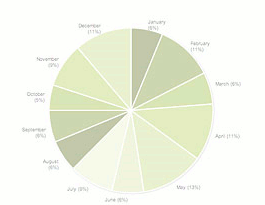


Janet Rossant Interviewed in The New York Times

A great role model for everyone is Janet Rossant, a premier cancer researcher who was interviewed by Claudia Dreyfus for The New York Times. I wish Claudia would publish a collection of her interviews with women scientists. Some of them have been real gems.
In this interview, Janet tells Claudia how she first discovered that chromosome breakage and rejoining can cause cancer. There was some serendipity involved, but more good scientific thinking and technique. She collected techniques in different laboratories she traveled to with her husband, and then she talked a cytogeneticist into letting her work with him and paying her a part time salary. She brought chromosome banding to bear on the tiny broken chromosome known to occur in CML type leukemia called the Philadelphia chromosome, and that revealed it was a reciprocal translocation, not just a deletion as had been thought. Janet got started as a medical doctor working in a clinic for retarded children when her own children were young. But without her major breakthroughs identifying transloactions in three major blood cancers, cancer research would be very different.
Rossant, typical for a woman, says no, the new treatment by Gleevec is not directly connected to her discoveries, that to say so would be too generous. But what she found out underlies all of the understandings that enabled Gleevec to be developed.
She says, near the end of the interview, that observational science is a real and important part of science, that hypotheses can be generated from observations and so throwing out the "fishing expeditions" is not good science planning. She says her own research could not have been done if she had been required to have a hypothesis before she began.
How do you feel about observational science?

Dear H,
Interesting to think that development of methods with a new microscope can bypass the hypothesis driven requirement of the NSF. I agree, test not prove, but I think the exploration Rossant was pointing to is even more fruitful. I'll check out the article, thanks!
Laura
Hi Helen,
I'm surprised and pleased to learn that your company believes discovery science can be more effective than hypothesis driven efforts, at least in finding really new approaches. I believe hypothesis driven research needs to be done after the discovery phase, but if you shut off all exploration, it's only going to test the old paradigms and not break into really new areas.
cheers,
Laura
Hi friends,
Just wanted to apologize that I didn't say Sonia Pressman Fuentes forwarded this article to me before it appeared in the New York Times. Many thanks, Sonia!
cheers,
Laura
#4 My most interesting and exciting work has come about because I took the time to "look" and then think about what I saw before leaping.
Pertinent to this discussion my company has a huge effort over the next few years to push "fishing" in a non-directed way to identify new targets for drug development. The old way of mining the literature and following the big academic labs just doesn't work.
Not only are half of the most "interesting" results from those labs not reproducible, those that are often turn out to be minor players in comparison to other aspects of the pathways involved. Part of that outcome is the focus on model organisms instead of human biology. A mouse does not recapitulate aspects of complex biology, especially once you add in confounding environmental factors.
But another part of the dearth of good targets is a consequence of the NIH funding process and its strong requirement for data generation and following a "safe" line of questioning. Of course with too many mouths to feed, they have little choice, but there are consequences for how the money gets doled out. And this does have an effect on the drug industry as it struggles to come up with new ways to treat human disease.
I'll go with the 4th choice, and I'm lucky NSF funded 4 proposals over 12 yrs to develop techniques for using a new microscope that didn't need heavy-duty hypotheses.
I criticized a proposal recently because it was planning to 'prove' a hypothesis, and I wanted them to 'test' the hypothesis, so they will have an open mind about the outcome.
My son sent an interesting article that may be related to our emphasis on Proving scientific results:
The decline effect and the scientific method : The New Yorker
http://m.newyorker.com/reporting/2010/12/13/101213fa_fact_lehrer?currentPage=all
Thanks for posting about Dr. Rossant. I have heard something about her but I didn't realize she uncovered all these things about the role of chromosome aberrations in cancer. Cool work and a terrific woman in science!
I wish I had a dollar for every time the NSF has said one of my best ideas is "only a fishing expedition." I think discovery science really matters, and that those who pretend it doesn't are just kidding themselves and ignoring their own scientific processes.

















